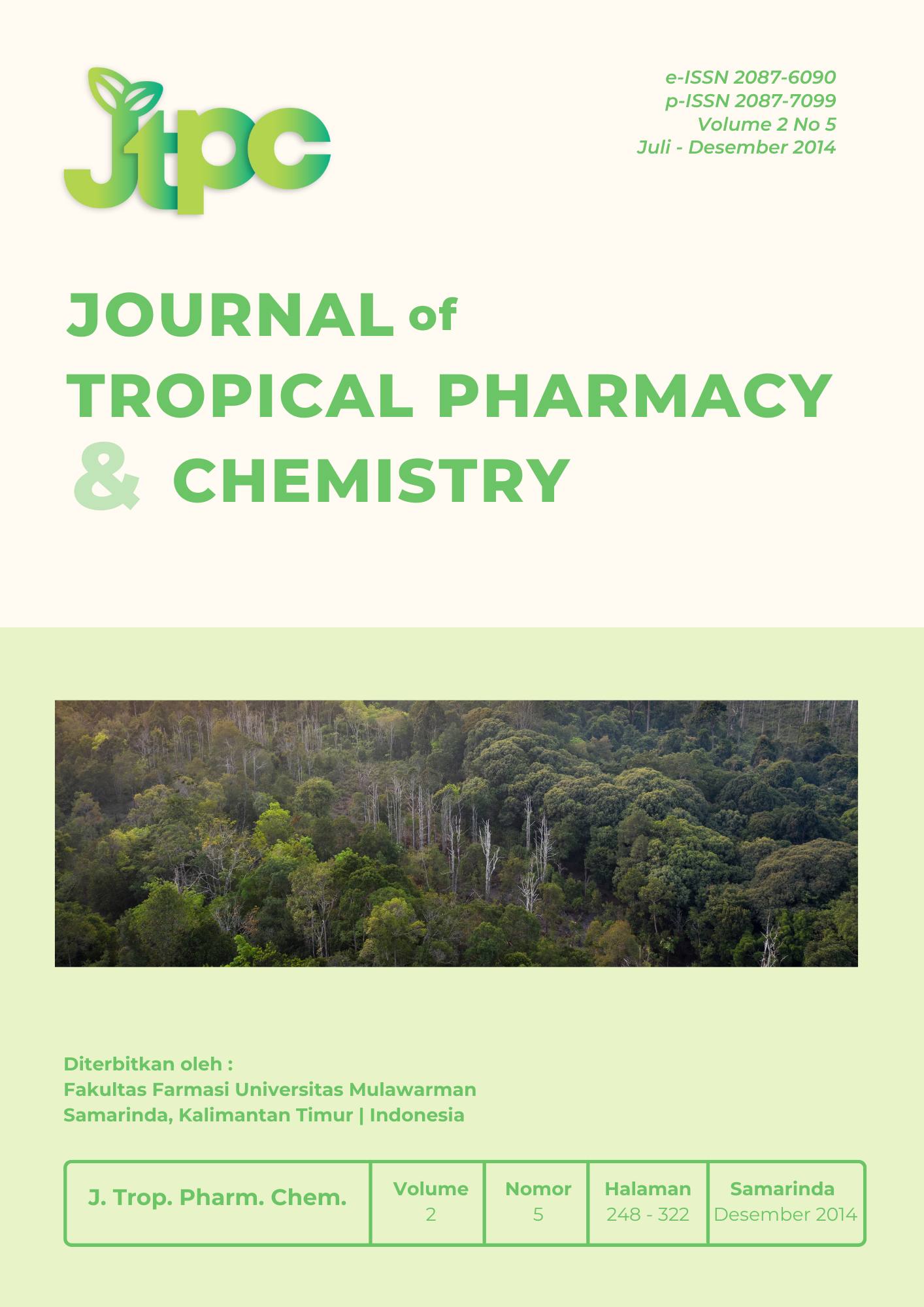Pengaruh Ketepatan Terapi dan Kepatuhan terhadap Hasil Terapi Hipertensi Di Poliklinik Penyakit dalam RSUP Dr. Sardjito Yogyakarta
Keywords:
Hypertension, Accurate Treatment, AdherenceAbstract
Hypertension is considered as one of the leading causes of death. Complication in blood tissue that is caused by hypertension and that is becoming the leading cause of death might include several diseases such as coronary artery disease (CAD), hearth attack, and stroke and kidney failure. The therapy of antihypertensive drug either in monotherapy or in combination therapy plays a very essential role for patients in which the therapy in this case must be given in consideration of the blood pressure and possibility of complication. This research is aimed to observe a description of antihypertensive drug treatment in policlinic of internal disease of RSUP Dr, Sardjito Yogyakarta, accurate treatment and treatment result and effect of medication adherence in decreasing blood pressure. This research is performed using a design of observational study supported by data prospectively taken in order to observe the accurate treatment and medication adherence of the hypertensive patient. The assessment for the therapy achievement was performed using The Seventh Report of Joint National Committee (JNC VII) on Detection, Evaluation, and Treatment of High Blood Pressure in 2003, meanwhile, the assessment for medication adherence was done by using questionnaire of new 8-item self report Morisky Medication Adherence Scale (MMAS). Based on the research, it is found that the antihypertensive drug could be in monotherapy and in combination therapy. The use of monotherapy was at (20%) in which it was mostly dominated by CCB category at (8%), while the use of combination therapy was at (80%) mostly dominated by the category of ARB and CCB, namely at (55%). Of 100 out-patients including the inclusion criteria, it was (93%) of them that had the accurate treatment of antihypertension and (7%) of them that did not get the accurate treatment of antihypertension. Again, it was at (91%) that had the accurate dosage of antihypertension and (9%) had no the accurate dosage of antihypertension. In the assessment of blood pressure, the number of the patients obtaining (the accurate medicine and dosage) with the blood pressure that could achieve the target of therapy was at (68%) and (68%). On the other hand, the number of the patients obtaining (the accurate medicine and dosage) but with the blood pressure not achieving the target of therapy was at (25%) and (23%). Furthermore, those obtaining (inaccurate medication and dosage) with the achievement of the blood pressure to the target of the therapy was at (6%) and (6%). It was only (1%) and (3%) for the patients not obtaining (inaccurate medication and dosage), not achieving the target of the therapy. Based on the medication adherence of patients in taking antihypertensive drug was at (50%) with a high level of adherence, (41%) with medium level and (9%) with low level. From the test of chi-square analysis and from the significant level of 0,002 (p<0,05) it is found a significant difference between adherence and the result of the decrease of blood pressure. Thus, it can be concluded that a high adherence can decrease the blood pressure.
Downloads
References
1.Anonim, 2007, Pharmaceutical Care untuk Penyakit Hipertensi, Direktorat Bina Farmasi Komunitas dan Klinik, Depkes RI, Jakarta, hal 12-16.
2.Chobanian, A.V., Bakris, G.L., Black, H.R., Cushman, W.L., Green l.A., izzo, J.l., Jones, D.W., Materson, B.J., Oparil, S, dan Wright, J.T., 2003. JNC VII Express: The Seventh Report of the Joint National Committee on Prevention, Detection, Evalution and Treatment of High Blood Presure, U.S. Deparment of Health and Human Services, pp 12-33.
3.DickEreson, L.M., Gibson, M.V., 2005, Management of Hypertension in older person, Am Fam Phys, 71 : 3, 469-475, www.aafp.org/afp.
4.Halperin, R.O., Sesso, H.D., JingMa, Buring, J.E., Stampfer, M.J., and Gaziano, J.M., 2006, Dyslipidemia and the Risk of Incident Hypertension in Men, diakses 10 Juni 2012, http://hyper.ahajournals.org/cgi/cont ent/full/47/1/45.
5.Hoffman, B.B., Carruthers, S.G., 2000, Cardiovaskuler Disorder, Hypertension in Carruters, S.G., McGraw-Hill, Chapter : 1.1-5.
6.Katzung., G., Bertram., 2010., Farmakologi Dasar dan Klinik,Edisi
10, Jakarta : Penerbit Buku Kedokteran EGC, hal. 161-162.
7.Morisky, D.E., Ang A, Krousel-Wood, M.A., Ward H, 2008, Predictive Validity of A Medication Adherence Measure in an Outpatient Setting, J. Health-Syst. Pharm, 10:348-54.
8.McPhee, S.J., Massie, B.M., 2005, Systemic Hypertension, in Tierne, L.M., McPhee, S.J., Papadakis, M.A., Current Medical Diagnosis and Disease Management, McGraw-Hill, 412.
9.Sakthong P, Chabunthom R, Charoenvisuthiwongs R (2009) Psychometric properties of the Thai version of the 8-item Morisky Medication Adherence Scale in patients with type 2 diabetes. Ann Pharmacother. May;43(5):950-7.
10.Saseen, J.J., and Carter, B.L., 2009, Essential Hypertension, in : Koda
Kimble, M.A., Young, L.Y., Kradjan, W.A., Guglielmo, B.J., Alldredge, B.K., dan Corelli, R.L., (eds) : Applied Therapeutics : The Clinical Use of Drugs, Eight Edition, New York : Lippincot Williams & Wilkin, Chapter : 14.1-43.
11.Weir, M. R., and Moser, M., 2000, Diuretik and βbloker: is the there arisk for dyslipidemia? diakses 17 mei 2010, http://www.medscape.view article/40908




